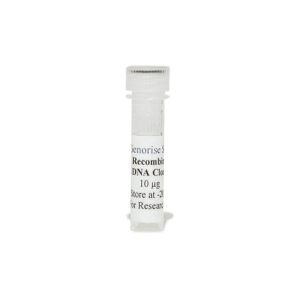Recombinant Human Myeloperoxidase Protein
$99.00 – $2,280.00
The recombinant human MPO protein is derived from in vitro expression of human MPO gene in E. coli and purified using his-tag affinity column and can be used in multiple applications such as cell culture, ELISA and western blot.
Alternative names for myeloperoxidase: MPO
This product is for Laboratory Research Use Only not for diagnostic and therapeutic purposes or any other purposes.
- Description
- Product Citations
- Reviews (0)
Description
Genorise Recombinant Human Myeloperoxidase Protein Summary
Alternative names for myeloperoxidase: MPO
Product Specifications
| Purity | > 97%, by SDSPAGE under reducing conditions and visualized by silver stain. |
| Endotoxin Level | < 0.1 EU per 1 μg of the protein by the LAL method. |
| Activity | na |
| Source | E. coli derived human myeloperoxidase. |
| Accession # | P05164 |
| N-Terminal Sequence Analysis | Met |
| Amino Acid Sequence | Met 251-Asp 566 |
| Predicted Molecular Mass | 35 kDa |
| SDS-PAGE | 35 kDa, reducing conditions |
Background:
Myeloperoxidase (MPO) is a member of the XPO subfamily of peroxidase that in humans is encoded by the MPO gene on chromosome 17. MPO is most abundantly expressed in neutrophil granulocytes and is a lysosomal protein stored in azurophilic granules of the neutrophil and released into the extracellular space during degranulation.[1] It produces hypohalous acids to carry out their antimicrobial activity. It requires heme as a cofactor. Furthermore, it oxidizes tyrosine to tyrosyl radical using hydrogen peroxide as an oxidizing agent.[2] Hypochlorous acid and tyrosyl radical are cytotoxic, so they are used by the neutrophil to kill bacteria and other pathogens.[3] However, this hypochlorous acid may also cause oxidative damage in host tissue. Moreover, MPO oxidation of apoA-I reduces HDL-mediated inhibition of apoptosis and inflammation.[4] In addition, MPO mediates protein nitrosylation and the formation of 3-chlorotyrosine and dityrosine crosslinks. Recent studies have reported an association between elevated myeloperoxidase levels and the severity of coronary artery disease.[5] And Heslop et al. reported that elevated MPO levels more than doubled might increase the risk for cardiovascular mortality over a 13-year period.[6] It has also been suggested that myeloperoxidase plays a significant role in the development of the atherosclerotic lesion and rendering plaques unstable.[7] MPO could serve as a sensitive predictor for myocardial infarction in patients presenting with chest pain.[8] The 2010 Heslop et al. study reported that measuring both MPO and CRP provided added benefit for risk prediction than just measuring CRP alone.[6]
References
- Kinkade JM, et al. (1983). Biochem Biophys Res Communications. 114 (1): 296–303.
- Heinecke JW, et al. (1993). The Journal of Clinical Investigation. 91 (6): 2866–72.
- Hampton MB, et al. (1998). Blood. 92 (9): 3007–17.
- Shao B, et al. (2010). Chemical Research in Toxicology. 23 (3): 447–54.
- Zhang R, et al. (2001). JAMA. 286 (17): 2136–42.
- Heslop CL, e tal. (2010). J American College of Cardiology. 55 (11): 1102–9.
- Nicholls SJ, et al. (2005). Arteriosclerosis,Thrombosis and Vascular Bio. 25: 1102–11.
- Brennan ML, et al. (2003). The New England Journal of Medicine. 349 (17): 1595–604.
Product Citations
Be the first to review “Recombinant Human Myeloperoxidase Protein”
You must be logged in to post a review.


























Reviews
There are no reviews yet.